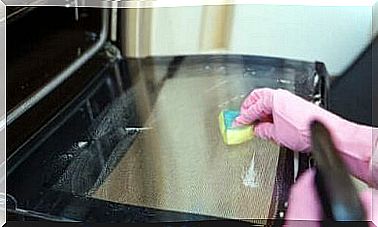Vitamin D Deficiency In Children
Vitamin D deficiency has been known for a long time. However, it has aroused greater concern and interest lately, especially when it occurs in children.

Research on vitamin D has become increasingly important in recent times. It is particularly associated with the study of diseases which, in addition to their own alterations, are accompanied by vitamin D deficiency in children.
Since this is a growing problem, it requires an incredible amount of research to continue. However, what seems clear is that there is a great deal of interest in this topic, but it is also a source of controversy.
Experts disagree on when to seek vitamin D screening, and when to take a supplement, if necessary.
What is vitamin D deficiency?
Vitamin D deficiency refers to the lack of vitamin D necessary for good health. In this sense, vitamin D plays an important role in the body. Particularly within the nervous, muscular and immune system, among others.
Likewise, vitamin D facilitates the absorption of calcium in the body, an essential component of bones. Therefore, vitamin D prevents osteopenia, which sometimes occurs in premature babies, according to data from the United States National Library of Health.

Source of vitamin D
In order to prevent vitamin D deficiency in children, it is important to know some of its sources. In this regard, vitamin D can come from different origins:
- Through the skin.
- With food and supplements.
Even though the body produces vitamin D naturally after exposure to the sun, the problem is that excessive exposure, and at the most inappropriate times, can lead to aging of the skin as well as skin cancer.
Vitamin D deficiency and the fear of rickets
As this information from the American Academy of Pediatrics reports , “Rickets is a condition that occurs when the bones become soft in growing children. It happens when the bones cannot absorb enough calcium and phosphorus to form strong, healthy bones. Although there are genetic and metabolic causes for rickets, the most common cause is vitamin D deficiency. Also known as nutritional rickets ”.
Therefore, rickets is a common disease in developing and underdeveloped countries. It is characterized by stunted growth and is accompanied by deformities of the bones. On the other hand, it usually manifests itself in children between 6 months and 3 years old. Because this is the stage where they grow the fastest.
In this regard, the scientific community also warns that breastfed babies who do not consume additional vitamin D are at greater risk. This risk is even greater if the mother of the child also suffers from vitamin D deficiency.

Excess vitamin D: a problem to be taken into account
According to the data from the American Library of Medicine in the United States that we have already mentioned, too much vitamin D can also be harmful to the body. This is called vitamin D toxicity.
As reported in this study published in the Bulletin Pharmacologique, signs of vitamin D toxicity include, among others:
- Nausea.
- Vomiting.
- Lack of appetite.
- Constipation.
- Weakness.
- Weightloss.
Too much vitamin D can also damage the kidneys. Or increase the level of calcium in the blood. Called hypercalcemia, high levels of calcium in the blood can cause confusion, disorientation. As well as heart rhythm disturbances.
At the same time, researchers from the Drug and Therapeutics Committee, Lawson Wilkins Pediatric Endocrine Society, point out that there is a need to review our knowledge of sources of vitamin D, both natural and unnatural. It is also necessary to know the mechanisms allowing to optimize the synthesis and the ingestion of this vitamin.
About vitamin D deficiency in children
It is essential to meet vitamin D requirements, measured in international units. For this it is necessary not to resort to self-administration. But rather to follow the advice and indications of a professional.
In addition, we must consider that it can be as dangerous not to cover the needs in vitamin D as to bring an excess. It is therefore important to find the right balance between sunbathing safely and getting adequate amounts of vitamin D.
Finally, we hope that this information on vitamin D deficiency has enabled you to deepen your knowledge on this subject. However, if you have any doubts, it is always best to consult a healthcare practitioner for proper diagnosis and treatment, if necessary.









